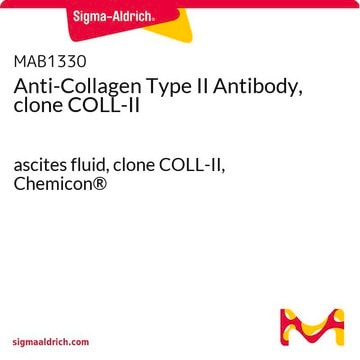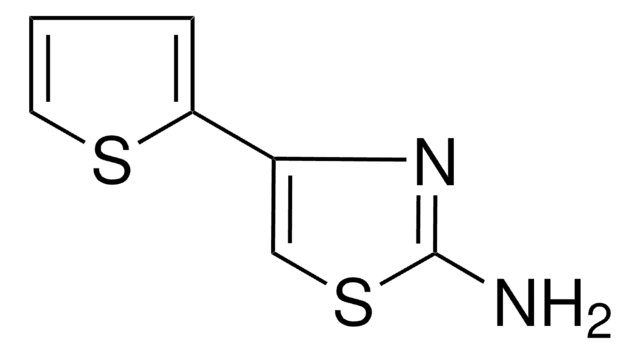MAB8887
Anti-Collagen Type II Antibody, clone 6B3
clone 6B3, Chemicon®, from mouse
Synonim(y):
Anti-Anti-ANFH, Anti-Anti-AOM, Anti-Anti-COL11A3, Anti-Anti-SEDC, Anti-Anti-STL1
About This Item
Polecane produkty
pochodzenie biologiczne
mouse
Poziom jakości
forma przeciwciała
purified immunoglobulin
rodzaj przeciwciała
primary antibodies
klon
6B3, monoclonal
reaktywność gatunkowa
human, chicken, mouse, salamander
producent / nazwa handlowa
Chemicon®
metody
immunofluorescence: suitable
immunohistochemistry: suitable
western blot: suitable
izotyp
IgG1
numer dostępu NCBI
numer dostępu UniProt
Warunki transportu
wet ice
docelowa modyfikacja potranslacyjna
unmodified
informacje o genach
human ... COL2A1(1280)
Specyficzność
Its epitope is localized in the triple helix of type II collagen. It shows no cross-reaction with type I or type III collagen. Immunoblotting of CNBr peptides of collagen II shows that MAB8887 reacts with CB11 (25kDa) fragment which is the site of immunogenic and arthritogenic epitopes along the intact type II molecule.
In pepsin solublized collagen II, MAB8887 reacts with a 95-97 kDa fragment, as well as, the native single chain of 120kDa. If propeptides are present, MAB8887 will detect a 200kDa fragment.
Immunogen
Zastosowanie
Cell Structure
ECM Proteins
Immunohistochemistry (Formalin/Paraffin): 1-2 μg/mL, 30 minutes at room temperature. Staining of paraffin embedded tissues requires digestion of tissue sections with pepsin at 1mg/mL in Tris HCl, pH 2.0 for 15 minutes at RT or 10 minutes at 37ºC.
Immunofluorescence
ELISA
Optimal working dilutions must be determined by end user.
Opis wartości docelowych
Postać fizyczna
Przechowywanie i stabilność
Komentarz do analizy
Cartilage in lung or fetus
Inne uwagi
Informacje prawne
Oświadczenie o zrzeczeniu się odpowiedzialności
Not finding the right product?
Try our Narzędzie selektora produktów.
Kod klasy składowania
12 - Non Combustible Liquids
Klasa zagrożenia wodnego (WGK)
WGK 2
Temperatura zapłonu (°F)
Not applicable
Temperatura zapłonu (°C)
Not applicable
Certyfikaty analizy (CoA)
Poszukaj Certyfikaty analizy (CoA), wpisując numer partii/serii produktów. Numery serii i partii można znaleźć na etykiecie produktu po słowach „seria” lub „partia”.
Masz już ten produkt?
Dokumenty związane z niedawno zakupionymi produktami zostały zamieszczone w Bibliotece dokumentów.
Klienci oglądali również te produkty
Nasz zespół naukowców ma doświadczenie we wszystkich obszarach badań, w tym w naukach przyrodniczych, materiałoznawstwie, syntezie chemicznej, chromatografii, analityce i wielu innych dziedzinach.
Skontaktuj się z zespołem ds. pomocy technicznej







